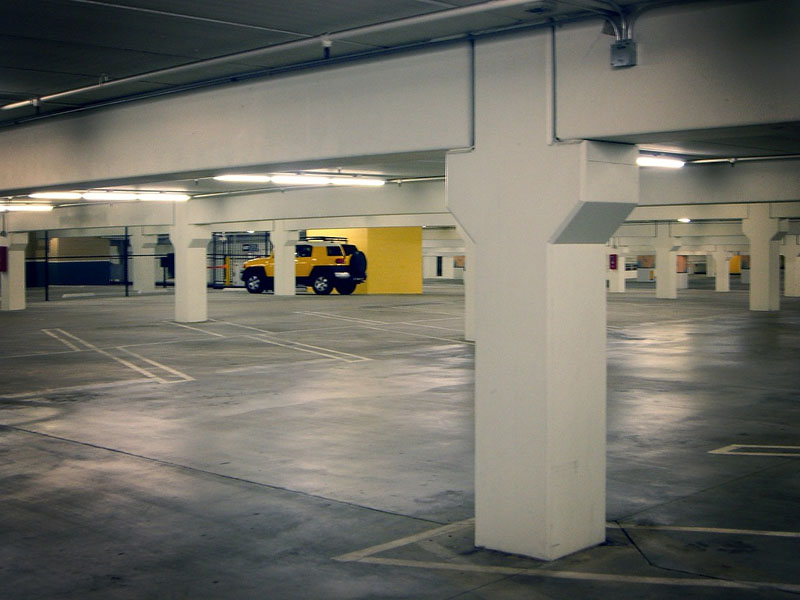When one thinks of parking lot accidents, the image of one or both motorists backing into each other from opposing spots comes to mind. While that scenario is the most common, accidents in parking lots occur in other ways too. Pulling through empty spaces; cutting across lanes; two vehicles colliding at the end of an aisle; two motorists attempting to pull into the same space.
The relative simplicity and perceived homogeneity of these accidents are not excuses for incomplete statements. Regardless of the circumstances, parking lot accidents require the same detailed questioning as intersection accidents with the objective being to establish what “caused” the accident to occur? With that in mind, here are three details we often see missed that every parking lot statement should include.

Establish the layout of the lot
Parking lots are designed with an intention of how the vehicles operating within it should move. This is largely tied to two factors: the angle of the parking spaces and the rules of the travel lane the backing car would be backing into. Though together they serve to determine the flow of movement within a parking lot, you should ask them as separate questions in a statement.
“Are the parking spaces straight or at an angle?”
It’s very common to ask an individual whether they were turning while leaving the space, and in which direction. It’s far less common to establish whether the parking spot abuts the travel lane perpendicularly, or whether it is angled to ease the vehicle back into its travel lane.
Why is this important? It establishes what the straight-line path is for a driver leaving their parking space. The driver leaving the space may say they were not turning, but if their space was angled, they are moving some distance along the lane of travel, by nature of the angle. In a situation where two vehicles are backing, this may help you establish the positioning of the vehicles. In a situation where a vehicle in the travel lane is struck, it may help you to understand what the driver in the travel lane perceived.
This question can also help establish what the driver is expected to do upon entering the travel lane. A car that is pulling out from an angled spot is intended to enter the flow of traffic in a certain direction. It should be jarring if the driver notes they were attempting to travel in the opposite direction.
“Is the travel lane you were entering one- or two-way?”
The follow-up question, of course, if they answer “One-way” is to ask which direction traffic moved in that lane. Direction of travel is not clearly marked in every parking lot, but it is useful to get the driver’s understanding of the flow of traffic on the statement. Even comments such as “I’m not sure about the direction, but there’s definitely only room for one vehicle in the lane” helps you establish details about the location and gives you insight into the driver’s decision-making.

Establish all of the elements in the immediate vicinity
If you’ve been following our blog here at ACS, you’ve certainly noticed that we constantly preach the importance of establishing the location before asking about accident details. That’s no less true for a parking lot accident.
Here are some elements of the location that you should definitely understand by the end of the statement.
-Were there vehicles or obstructions in the spaces next to you?
-What was on the opposite side of the travel lane? If it was parking spaces, were there vehicles or obstructions in those spaces?
-Was the travel lane part of the parking lot, or was it a road?
-Where were you positioned in the row of parking spaces? (I.e., in the middle, on an edge?)
As with any statement, the better you understand the location, the more insightful your follow-up questions can become.

Establish what the driver(s) leaving their space did to understand their environment
We mentioned above that the greater degree of care is expected of a driver backing out of a parking space than there is of one moving through the travel lane. Understanding exactly what the backing driver did to understand their environment before and during backing is essential to understanding how the accident happened.
Establishing what the driver was able to see is a common part of parking lot accident statements. This will be helped immeasurably if you did a good job establishing the environment, as you will already have an idea of whether an adjacent vehicle or obstruction may have contributed to a lack of visibility. (Although it’s important to be aware of these things, it’s also important not to suggest this to the driver– let them answer as best they can from their own recollection.) You should also have learned where the other vehicle was before the driver left their space, as well as any other relevant details.
Ask the driver what actions they took in the vehicle before leaving the space. You may need to use specific yes or no questions. Did they turn to look behind them? Did they use the side mirrors, or rearview mirror? Does their vehicle have a backup camera, and were they using it at the time? Did they proceed to back out in stages, or was it done in one motion?
Did we miss anything? Let us know
A parking lot accident’s relative homogeneity shouldn’t be an excuse for how often we see these key elements missed or underdeveloped. Following these tips will help you take a comprehensive statement every time. Still, if there’s something you do we didn’t mention here, we’d love to hear it! We’d also love to hear any strange corner cases that don’t follow the typical parking lot accident rules. If you have anything you want to share with us, you can find us on Twitter @acsacc, or let us know in the comments below!
Also, if you want to see more on ACS’s approach to recorded statements, check out our YouTube channel!
